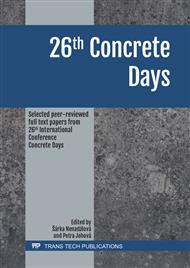p.120
p.126
p.132
p.140
p.149
p.157
p.163
p.169
p.174
Numerical Analysis of Temperature Distribution throughout a Concrete Slab during Fire Using a Web-Based Solver
Abstract:
The problem of heat transfer in solid materials can be described by the well known transient heat transfer equation. However, as the problem is strongly non-linear, the solution to this equation generally cannot be determined directly. Various numerical approaches have been proposed and employed by various authors for solving the problem.However, most of the available numerical solvers are limitedly available as they are often not free to use, they have to be installed, and they are too complex.This paper presents a new web-based solver for the problem of heat transfer over the thickness of a concrete slab during fire developed by the authors.The computational algorithm is based on the finite difference method and implemented using JavaScript.A graphical user interface for the input of user-defined parameters and for the interpretation of results is created using HTML.The paper also briefly presents the theory behind the computational algorithm.Moreover, examples of various problems solved by the web-based solver are presented in the paper.A brief parametric study of the effect of initial density of the material on the temperature distribution in the slab during fire is also presented. From the presented figures and examples, it can be readily seen that the newly developed web-based solver for the assessment of temperature distribution over a slab thickness during fire is user-friendly, easy to use, highly accessible, fast, and intuitive.
Info:
Periodical:
Pages:
149-156
Citation:
Online since:
August 2020
Authors:
Price:
Сopyright:
© 2020 Trans Tech Publications Ltd. All Rights Reserved
Share:
Citation:


